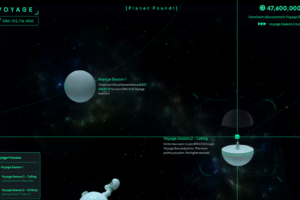The emergence of Web3 has paved the way for a new era of secure, private, and self-sovereign digital identities. As we transition towards a more decentralized internet, the need for user-centric identity solutions that empower individuals to control their personal data becomes increasingly important. In this article, we will explore the concept of self-sovereign identity (SSI) and examine various Web3 identity solutions that are enabling a new paradigm in digital identity management.
What is Self-Sovereign Identity (SSI)?
Self-sovereign identity is a decentralized approach to digital identity management, where individuals have full control over their personal information, including its storage, use, and sharing. SSI shifts the power dynamics from centralized institutions to individuals, allowing users to manage and authenticate their identities without relying on third-party intermediaries. Key features of SSI include:
- User Control: Users have complete control over their personal data, including the ability to decide when, with whom, and for what purpose their information is shared.
- Privacy-Preserving: SSI solutions utilize cryptographic techniques to protect users’ personal information, enabling them to authenticate their identity without revealing sensitive data.
- Interoperable: SSI systems are designed to work across different platforms, networks, and services, ensuring a seamless user experience in the decentralized ecosystem.
- Portable: Users can easily transfer their digital identity between different services and applications without the need to create multiple accounts or credentials.
Web3 Identity Solutions: Projects and Protocols
Several Web3 projects and protocols are working to develop self-sovereign identity solutions that empower users in the decentralized ecosystem. Some notable examples include:
- DID (Decentralized Identifiers): DID is a core component of SSI and serves as a globally unique identifier that is controlled by the individual, rather than a centralized authority. DIDs are anchored on blockchain networks, providing a secure and verifiable way to manage digital identities. The W3C (World Wide Web Consortium) has standardized the DID specification, enabling interoperability across various platforms and services.
- uPort: uPort is a Web3 identity platform built on the Ethereum blockchain that enables users to create and manage their self-sovereign identities. With uPort, users can sign transactions, authenticate their identity, and control access to their personal information using decentralized identifiers and verifiable credentials.
- Sovrin: Sovrin is a decentralized identity network that leverages the Hyperledger Indy framework to provide a secure, privacy-preserving, and interoperable platform for SSI. The Sovrin Network allows users to create, share, and verify their digital identities while maintaining control over their personal data.
- ION (Identity Overlay Network): Developed by Microsoft, ION is a decentralized identity system built on the Bitcoin blockchain. ION uses the Sidetree protocol, a scalable, off-chain solution that enables users to create, update, and verify their DIDs without relying on third-party intermediaries.
- Ontology: Ontology is a high-performance public blockchain that supports decentralized identity solutions through its ONT ID framework. ONT ID enables users to create, manage, and authenticate their digital identities in a secure and privacy-preserving manner.
Conclusion
Web3 identity solutions, such as self-sovereign identity, are transforming the way individuals interact with the digital world by offering secure, private, and user-centric alternatives to traditional, centralized identity systems. As the Web3 ecosystem continues to evolve, self-sovereign identity and decentralized identity solutions will play a crucial role in empowering individuals, fostering trust, and enabling seamless interactions in the decentralized world.























![StarsArena (StarShares): The Universe of Web3 Crypto Social Media! [Guide] starsarena](https://cryptos.us/wp-content/uploads/2023/10/starsarena.png)

